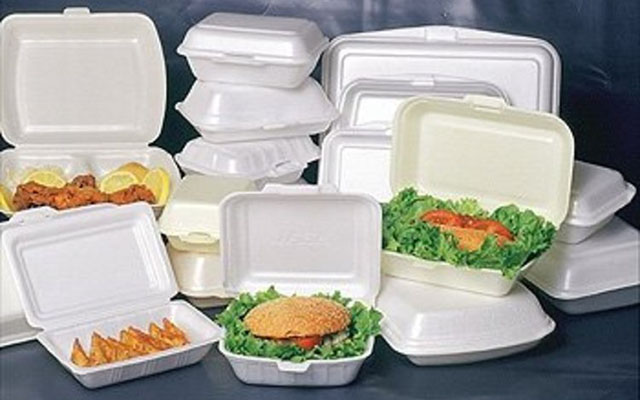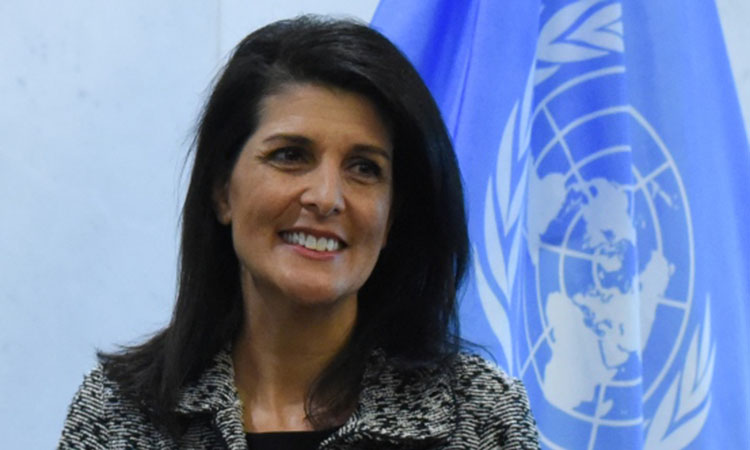Myths, truths about kaylite

Innocent Chikurunhe Correspondent
There have been a lot of myths and misconceptions around the issue of polystyrene as a food packaging material world over and Zimbabwe is not spared.
This has led to its ban in some parts of the world and Zimbabwe is catching the fever as well. Most environmental agencies believe that it is non-recyclable and non-biodegradable.
Ninety-five percent of the plastics produced from petroleum products are non-biodegradable including polystyrene and that must not disqualify it as a material of choice in food packaging.
It is also recyclable like all the HDPEs and PPs or PETs used in food packaging. Environmentalists strongly believe that it must be banned because it is a nuisance to the environment and that it is a health risk. Is this really what it is?
Perhaps the starting point is to understand scientifically where this material comes from and explore its chemical and physical properties so that we can critically argue from an informed position.
Polystyrene is a polymeric material derived from the repeated addition of styrene monomer to itself in a process called addition polymerisation reaction. This makes it a homo-polymer with controllable properties and known processing parameters.
Chemical Structure of Styrene (The Chemistry Nuts & Bolts)
Monomer = one unit
Poly = many units
Poly –styrene = many styrene units joined together chemically.
When the above styrene monomer is polymerised under conditions of pressure, temperature and catalyst it opens the C=C double bond and adds to itself repeatedly resulting in the formation of a large molecule called polystyrene as outlined below.
Synthesis/formation of Polystyrene from Styrene monomer
Once synthesised, polystyrene can be processed into rigid products such as cups, plates, tumblers, spoons and knives using injection moulding processes. It can also be processed using extrusion based processes where inert gas (butane) is introduced to convert it from rigid to flexible foam.
Gases used to make Expanded Polystyrene (EPS) are ozone friendly and free from CFCs. Such examples of gases are pentane or butane gases. The expanded polystyrene is then thermoformed into food trays, hot beverages cups or insulation materials for various applications including pre-fabricated panel walls for insulated buildings. Styrene can be blended with other monomers to produce various grades of polystyrene such as GPPS, HIPS, SAN, ABS and EPS (kaylite). All these have various chemical and physical properties depending on the additives incorporated to enhance properties for desired applications.
To generalise that polystyrene is carcinogenic, mutagenic or neurotoxic will be hugely misleading to the general public, any such claim must point to a specific formulae of polystyrene highlighting all constituencies making up the selected grade of polystyrene. Polystyrene in its pure form is an inert and safe material as both a food packaging and protective material. The use of the term polystyrene should be categorised as a descriptor of various formulations making varied grades of polystyrene as indicated above.
Is Polystyrene recyclable?
A plastic is called recyclable when it melts and flows upon heating and solidifies upon cooling, such family of plastics are called thermoplastics. Like PE, PP, PVC, PET or nylon, polystyrene is a thermoplastic, it melts when heated and it solidifies when cooled. This phenomenon qualifies it as a recyclable plastic. It does not struggle to burn.
Polystyrene is a thermoplastic which melts on heating
Is Polystyrene non–biodegradable? Kevin O’Connor et al at the University College of Dublin heated polystyrene and converted it into styrene oil through a pyrolysis based process (controlled and oxygen starved incineration)
The styrene oil was fed into soil bacteria called Pseudomonas putida which converted it into biodegradable plastic known as Polyhydroxalkanoates (PHA).
PHA can be used to make plastic forks and packaging film. It is resistant to heat, grease and oil. Unlike polystyrene foam, PHA biodegrades in soil and water (American Chemical Society Journal of Environmental Science and Technology.
Is polystyrene a safe food packaging material?
Health and Safety issues
- Foamed polystyrene products comprise of 95 percent air and 5 percent weight. Polystyrene is an inert packaging material.
- Their use as food packaging material has been approved by US Food and Drug Administration (FDA). The Hong Kong Food and Environmental Hygiene Department and the European Food Safety Authority both concurred with FDA concluding that EPS is a safe material for food service packaging.
- The research conducted by the 12 member international expert panel selected by the Harvard Centre for Risk Assessment with expertise in toxicology, epidemiology, medicine, risk analysis , pharmacokinetics and exposure assessment revealed that Styrene monomer is naturally present in trace quantities of foods such as strawberries, beef and spices.
They also concluded that it is also produced naturally when processing foods like wine and cheese.
- The findings and conclusions drawn from this research were that there is cause for limited concern for the general public from exposure to styrene from foods or styrenic materials used in food contact applications such as polystyrene and food service containers especially after microwaving (Cohen et al (2002) a comprehensive Evaluation of Potential Risks Associated with Occupational and Environmental Exposure to Styrene; Journal of Toxicology and Environmental Health part B; Critical Reviews)
Can foam products be used in a microwave oven?
Proper use of polystyrene plastic cups or containers in a microwave oven is safe, as long as they are not overheated. The performance of polystyrene products in a microwave, however, may vary depending upon the type of food being heated, the length of heating time, and the intensity of the microwave oven.
Typically, microwaves act to heat the water within a food or beverage. This heat is then transferred to the entire food or beverage contents. Since polystyrene cups or containers themselves do not contain water within their molecular structure as shown on its formation chemistry above, they are unaffected by the microwaves. If the container’s temperature changes, it is only because of the increasing heat of the liquid or solid they contain. Be aware that food with a high sugar or fat content (or both) can raise the boiling temperature to over the normal 100 degrees Celsius.
Exposure limits to styrene
According to the Environmental Protection Agency (EPA) of USA, The US Department of Labour, Occupational Safety and Health Administration and International Agency Research on Cancer (IARC), Styrene monomer is classified as a possible human carcinogen when it exceeds certain thresholds.
The generally agreed exposure limits are in the range of 50ppm to 100ppm. Any claim that the Zimbabwe kaylite is carcinogenic must be supported by scientific evidence that it is producing styrene monomer exceeding 100ppm when microwaved or incinerated at a dumpsite.
Does polystyrene really produce dioxins?
What are dioxins?
These are a group of chemically related compounds that are persistent organic pollutants (POPs). The chemical name is 2, 3, 7, 8 tetrachlorobenzo para dioxin (TCDD) which are benzo–chlorine derivatives.
Typical chemical structure of dioxins
Polystyrene as shown in its chemical structure does not carry chlorine as depicted by the dioxin chemical structure above hence the question, does it really produce dioxins?
The obvious and potential plastic material capable of producing dioxins when burnt at elevated temperatures is Polyvinylchloride (PVC) as it carries a halogen(chlorine) on its backbone and plasticisers used to soften it are derived from DIOPs which are capable of leaching into food stuffs. This is the main reason why PVC is no longer used for food packaging under the FDA directive.
Currently there is no consensus view among all stakeholders concerning whether or not elevated emissions of dioxins will be produced when polystyrene is combusted. The research done by Solid Waste Association of North America, Silver Spring, Maryland under subcontract number AS-2-12098-1 concluded that regardless of whether PVC plastics are present in Municipal Solid Waste or not during combustion, dioxins can still be formed.
They further reported that there is no correlation between the amount of plastics in Municipal Solid Waste and the concentration of PolyChlorodioxins in air emissions when waste streams containing plastics are incinerated. Such findings were also supported by similar research findings in Canada, Denmark, France, Sweden, USA, Germany and Italy.
If PVC which is the likely culprit plastic containing chlorine and is ruled out on producing dioxins, no amount of speculation must find polystyrene emitting dioxins when combusted.
Sources of dioxins contamination.
- Dioxins are by-products of industrial processes such as smelting, chlorine bleaching of paper pulp and manufacturing of some herbicides and pesticides.
- More than 90 percent of human exposure to dioxins is through food supply that is meat and dairy products.
- It is not scientifically proven that polystyrene produces dioxins that leach into food but it is scientifically proven that dioxins are prevalent in meat and dairy products even before the food is packed in polystyrene, perhaps suggesting that the meat and dairy products are contaminating polystyrene packaging with dioxins and not the other way round.
- How do dioxins get into the environment?
- Uncontrolled incineration of hospital and chlorine containing solid wastes results in release of dioxins into the environment.
- The highest levels of dioxins are found in dairy products, meat, fish and shellfish. Very low levels are found in plants, air and water according to the report produced by World Health Organisation (WHO) on their website .
- Dioxins are best destroyed in high temperature controlled reactors (pyrolysis reactors)
- Most dioxins are found in milk, or animal feed due to fat, clay and citrus pulp pellets used during production of animal feed, the report concluded that way.
Prevention and control of dioxins
WHO/UNEP working together in the context of Stockholm Convention are monitoring and regulating the release of dioxins into the environment through the International Programme on Chemical Analysis Safety (IPCS)
Are biodegradable plastics the solution?
In San Francisco and Oakland , they proposed the ban of polystyrene because they are now pursuing the technology of bio based plastics made from potato–starch rendered biodegradable. Whilst bio based alternatives are so far the only possible way to replace polystyrene, they come with their own challenges.
Bio based plastics technology is an emerging technology just like nanotechnology and developed countries are at the research stages and yet to fully commercialise the technology. For developing countries the wait might be a little longer before adoption of such technologies due to a number of technological and funding deficiencies.
Normally when a technology competes with the food security of a country, such a technology becomes a threat to the welfare of the population.
To make a kilogram of Polylactic acid from maize or potato as a monomer for bio based plastics, it requires about three kilograms of maize.
So far, the demand for plastics particularly for packaging per year globally is over 270million tons. If maize is to be used to meet this demand of biodegradable plastics, it means 715,5 million tons of maize must be removed from the world’s food supply at a time when global warming is reducing tropical farm productivity.
Maize and potatoes are staple foods; they are used to make animal feed, cooking oil and beverage brewing in Zimbabwe. It will certainly be suicidal and irresponsible of a nation to make a plastic plate from maize and fail to put food in the newly designed and decorated biodegradable plate from maize.
Possible solutions to polystyrene management
The recovery of polystyrene from the environment is the major challenge. It is voluminous yet by weight there is not much in the environment. Unless the process is incentivised, it would be hard to imagine anyone bringing the waste polystyrene food tray back into a bin. Proposals have been put forward for incorporating a deposit fee onto the polystyrene packaging material so that it can easily be recovered by waste vendors for redeeming the deposit value. The relevant authorities are yet to enforce the deposit fee.
The work currently being done by Zimbabwe Polystyrene Packaging Council (ZPPC is commendable
The erection of room–sized polystyrene cage at 4th Street Bus Terminus in Harare as a pilot study and recovery model has seen the rapid removal of polystyrene food trays from the surrounding areas. The polystyrene is baled by a hand operated compactor and is delivered to the Trust’s Highfield Recycling Centre where it will wait to be pryolysed into oil and green fuels. If such efforts can be rolled out to other cities and towns, more polystyrene will soon be a thing of the past in the environment.
There is need for public awareness through education so as to inform the population about such initiatives so that they equally can play their role as responsible citizens of a beautiful country like Zimbabwe.
Conclusion and way forward
It can clearly be seen that polystyrene is not necessarily as bad as is said elsewhere and there is no tangible scientific evidence to suggest that it is neurotoxic or carcinogenic in its polymeric form of which that is when it is in contact with food.
FDA approves polystyrene as a safe packaging material. It is therefore the case of the environmentalists to enforce recovery of the polystyrene from the environment ensuring cleaner cities ahead of dioxins’ unproven health risks speculated to be coming from polystyrene as a packaging material.
It has been cited by World Health Organisation (WHO) that foodstuffs such as beef, dairy products and fruits like strawberries naturally contain styrene even before they are packed in polystyrene. Styrene is not released from Expanded Polystyrene (kaylite) until it is heated up to furnace or pyrolysis temperatures in the region of 300-450 degrees Celsius.
Whilst polystyrene has been largely regarded as a nuisance to the environment in Zimbabwe, its ban has ripple effects as follows:
- The manufacturing industry in Zimbabwe is closing down and the few left companies are barely managing.
- The polystyrene manufacturing and food industries are just the few companies still able to employ people in Zimbabwe.
- The paper industry particularly for food grade greaseproof paper took a nose dive into a dry pool a few decades ago.
- So a ban on polystyrene would shatter the last hopes of the last standing employees of these companies and a loss of an affordable, hygienic and FDA approved food service packaging material.
- Banning a material before alternative sources to replace polystyrene can be a disaster waiting to happen in terms of levels of food hygiene in food outlets.
- Currently there is no reliable clean water supply to use for washing dishes in the country and any suggestion of removing polystyrene might lead to primitive diseases like cholera, typhoid and dysentery which were already reported in Harare suburbs of Hopley, Glen Norah and Budiriro early in February–March 2016 period.
Waste management is a daunting and unprofitable business which no right business minded people would want to venture into unless heavily funded and supported by Government and private sector.
It takes everyone to play his/her role to conquer this challenge. Corporate Social Responsibility and public attitudes can play a pivotal role in ensuring that our environment is clean. Waste is a product of application of Science, Technology and Engineering in making products which are later thrown away.
In order to manage waste successfully, there is need for government, private sector and donor funding to motivate and incentivise sustainable technologies that can add value to waste such as waste to energy for a green economy.
In doing so, jobs can be created for local communities who may increase their income per household through recovery of waste from the environment and selling it to recyclers.
Whilst fines and bans have been applied elsewhere in the world, Zimbabwe needs to think outside the dumpsite and make the most of its waste currently being exported to other countries. Debate must be opened about mobilising resources towards importing technologies which can process these materials into valuable commodities. An all-inclusive integrated waste management approach treating waste initiatives as business models must be adopted.
- Eng I Chikurunhe is a specialised and Chartered Polymer Engineer & Scientist, a founding member of the Department of Polymer Technology and Engineering, Programme Coordinator /Lecturer at Harare Institute of Technology. He is the current chairman of the Standards Association of Zimbabwe Council on Materials, Textile and Packaging. Feedback: [email protected] or [email protected]











Comments